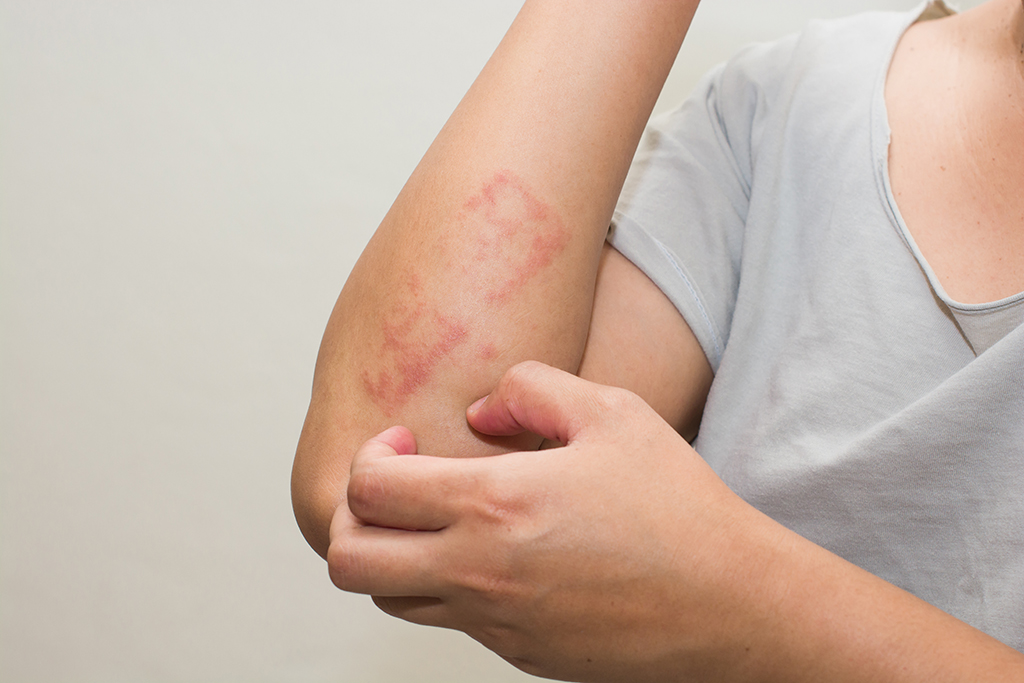
Lamotrigine is a broad-spectrum antiepileptic agent indicated for the treatment of both focal and generalised seizures. It is also approved for the prevention of depressive episodes in people with bipolar disorder. While many studies demonstrate the safety and efficacy of lamotrigine, the product information contains a boxed warning. This warning states that lamotrigine has been associated with severe and potentially life-threatening rashes, particularly when used in children.
These skin reactions typically occur within the first eight weeks of therapy. While the majority of skin reactions are mild and self-limiting, serious events including Stevens-Johnson syndrome (SJS), toxic epidermal necrolysis (TEN), and drug reaction with eosinophilia and systemic symptoms (DRESS) have been reported. As it is not possible to reliably predict which rashes will become life-threatening, lamotrigine should be ceased in any patient who develops a rash unless the rash is clearly not drug-related. In patients who present with SJS, TEN, or DRESS with the use of lamotrigine, the medication should be ceased immediately and not restarted at any time.
While SJS and TEN were once thought to be distinct conditions, they are now considered part of a disease spectrum with SJS at the less severe end. The condition typically begins with influenza-like symptoms before widespread mucocutaneous exfoliation develops with or without blisters. In SJS, over 10% of the body surface area is affected, while over 30% is affected in TEN. Blisters then merge to form sheets that detach to expose the dermis which appears red and oozing. The mucous membranes may also become involved to produce severe conjunctivitis, difficulty breathing and swallowing, genital pain, difficulty urinating, and diarrhoea. While these conditions are rare, the mortality rate is high at up to 12% for SJS and around 30% for TEN. Patients who recover may experience long-term complications including pigmented and scarred skin, damaged nails and joints, and vision loss.
Drug rash with eosinophilia and systemic symptoms is a serious form of T-cell-mediated drug allergy. The symptoms of DRESS are highly variable as multiple organ systems can be affected. However, it often initially presents with a generalised influenza-like syndrome and progresses to include morbilliform eruption, haematological abnormalities (e.g. eosinophilia, atypical lymphocytes, thrombocytopenia, anaemia), and lymphadenopathy. Early manifestations of DRESS can present with fever and lymphadenopathy and patients should be reviewed even if a rash is not present. The mortality rate from DRESS is around 10% but can be considerably higher if organ failure occurs.
The incidence of skin rashes with lamotrigine has been reported to be as high as 9.98% in prospective studies and as low as 2.09% from post-marketing studies. However, the incidence of serious skin reactions is much lower, affecting around one in 500 patients. Children appear to be at greater risk, with up to one in 100 children taking lamotrigine for epilepsy hospitalised for skin reactions.
The overall risk of rash is thought to be highly associated with the initial dose. Actions that may reduce the risk of serious skin reactions include:
- Adhering to initial dosing recommendations;
- Following the recommended guide for dose escalation; and
- Consideration of drug interactions.
The product information should be consulted for advice on initial dosing and subsequent dose escalation. This may also be relevant for patients who have temporarily discontinued lamotrigine. When lamotrigine has been discontinued for a period exceeding five half-lives, it is recommended that the initial dose-escalation schedule is followed.
In healthy volunteers taking no other medications, the mean elimination half-life of lamotrigine is 25.4 after multiple doses. However, the half-life of lamotrigine is highly variable and affected by a number of medications that induce or inhibit its metabolism. Lamotrigine is predominantly metabolised by glucuronidation. Valproate significantly inhibits this metabolism and can almost double the mean half-life of lamotrigine. This may increase the risk of serious skin reactions and demands a lower lamotrigine dose. For patients already taking valproate, lamotrigine is recommended to be initiated at 50% of the usual dose. This is usually administered as the usual dose given on alternate days for the first two weeks of therapy. Conversely, medications such as phenytoin, carbamazepine, phenobarbitone, and primidone may induce the glucuronidaiton of lamotrigine and reduce its half-life. Antiepileptic medications known not to significantly affect the metabolism of lamotrigine include gabapentin, levetiracetam, pregabalin, topiramate, and zonisamide. If the effect of other drugs on lamotrigine metabolism is unknown, it is safest to use the reduced dosing regimen recommended for patients taking valproate.
Lamotrigine has the potential to cause serious skin reactions. To reduce the incidence of these reactions, it is recommended that therapy is initiated at low doses and escalation not exceed what is advised in the product information. While most serious skin reactions are expected to occur within the first eight weeks of therapy, case reports exist of serious skin reactions developing much later. Therefore, any rash that appears during lamotrigine therapy requires immediate evaluation. Discontinuation of lamotrigine should be considered if an alternative aetiology of the rash cannot be established.
References:
- Dermatology Expert Group. Therapeutic Guidelines: Dermatology. Version 4. Melbourne: Therapeutic Guidelines; 2015.
- Hwang SJE, Fernandez-Penas P. Toxic epidermal necrolysis (TEN) and (Stevens-Johnson syndrome (SJS). Rhodes: The Australasian College of Dermatologists; 2019.
- Lamictal® (lamotrigine) Australian approved product information. St Leonards: Aspen Pharmacare. Approved October 2018.
- Tsyrulnik A, Landman A. Drug rash with eosinophilia and systemic symptoms: two emergency department cases. West J Emerg Med. 2011; 12(4): 559-62.
- Wang XQ, Xiong J, Xu WH, Yu SY, Huang XS, Zhang JT, Tian CT, Huang DH, et al. Risk of a lamotrigine-related skin rash: current meta-analysis and postmarketing cohort analysis. Seizure 2015; 25: 52-61.
Subscribe Knowledge Centre Updates
Enter your details to receive Knowledge Centre updates
